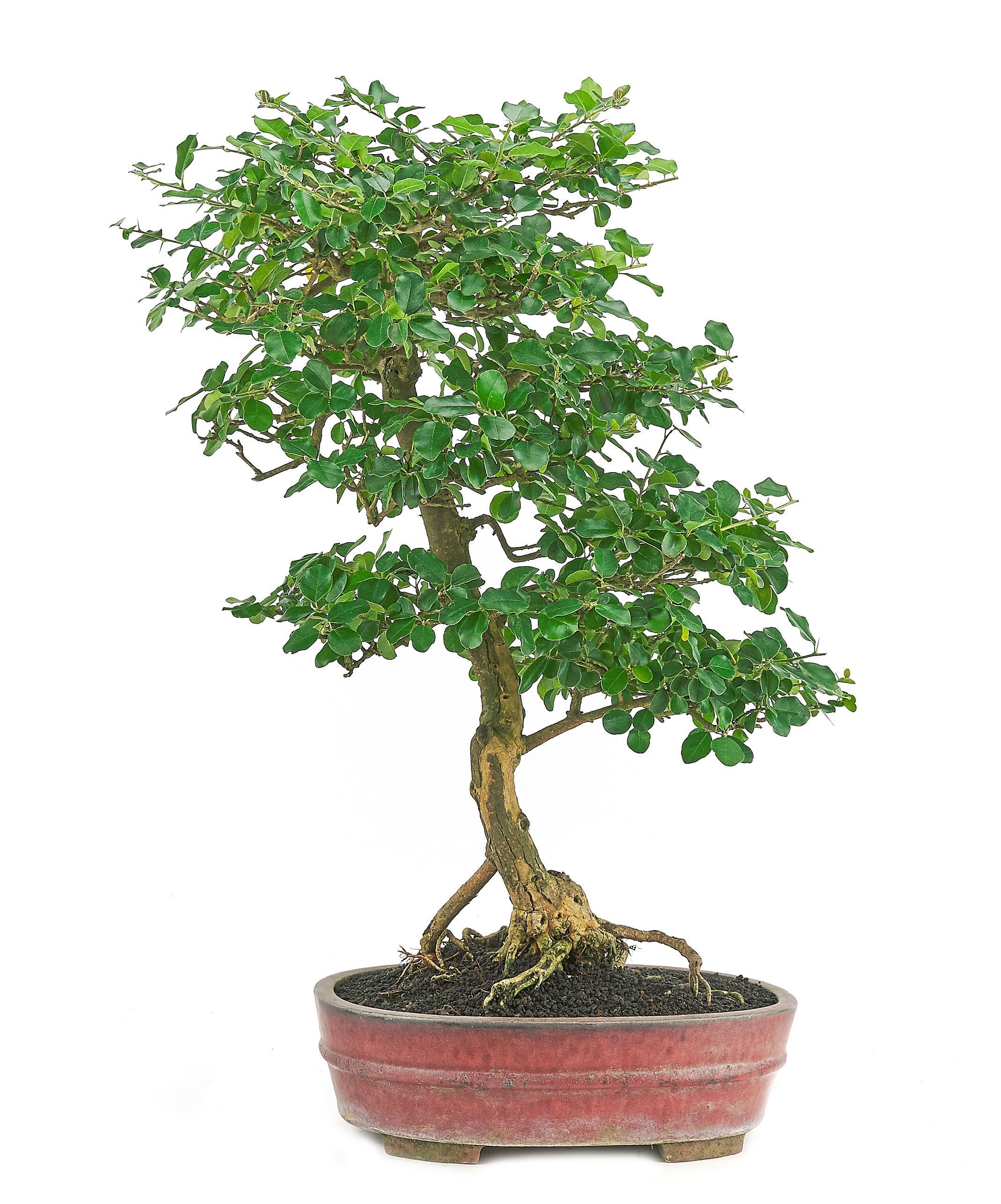Characteristics
Tree that is widely distributed in lowlands, forests or dense bushes at altitudes between 500 and 2000 meters above sea level. It can eventually grow to an approximate height of 7 meters, but it is often found as a shrub or small tree. Its pulpy fruits of orange color when they are ripe are really eye-catching.
Location
Bonsai that should be placed indoors or in semi-shade places, since it does not tolerate strong sunlight exposure.
Watering
Shrub that needs a lot of humidity, since in its usual state it lives close to river areas in dense bushes. We will water with plenty of water when we observe that the surface of the soil is dry.
Avoid waterlogging and keep the irrigation area well drained.
Fertilization
From spring to mid-autumn with organic fertilizer or liquid NUTRIBONSAI from MISTRAL, applied every two weeks through irrigation water.
Re-potting
Every 2 to 3 years, in early spring, just a bit before the beginning of the annual budding.
After transplanting it is convenient to water with a solution of VITABONSAI from Mistral Bonsai, to accelerate the recovery of the tree.
Substrate
A mixture of 6 parts of Akadama, with 4 parts of volcanic gravel can be used; otherwise Mistral Bonsai TERRABONSAI can also be used.
Pruning and pinching
Pruning
Pruning will be done only to give the desired shape.
Pinching
Throughout the growing season we can perform light pinching to get a denser cup.
Wiring
We practice wiring, to distribute the branches, in early spring and before the sprouting of the stems, in order not to damage the new shoots.
Curiosities
Being of Moraceae genus, in China, its leaves serve as a food copy for silkworms when mulberry leaves are scarce.
Its fleshy and juicy fruits, very similar to those of the mulberry trees, are really appealing.

